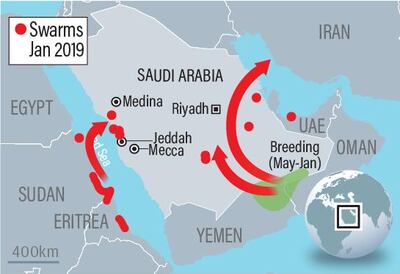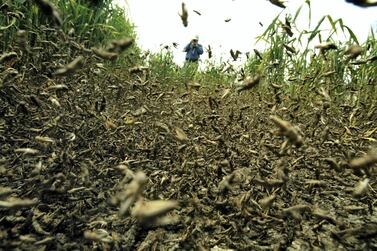Locust swarms devastate communities when they descend from the deserts and devour all in sight.
This year has been bad for locust swarms. Good rains along the Red Sea coastal plains in Eritrea and Sudan allowed two generations of breeding between October and February.
Cyclones Mekunu and Luban in May and October 2018 led to mass breeding in Saudi Arabia’s Empty Quarter and near the Yemen-Oman border.

In June, a swarm crossed the Mediterranean and hit Sardinia. More than 2,0000 hectares of farmland was devoured. Farmers said that within days there was little left to harvest.
Teams are still on the ground in Saudi Arabia, mopping up the last of clusters of locusts that crossed the Red Sea from Sudan earlier this year. In May, the Jordanian air force was brought in to battle a swarm that was blown up from the Gulf.
This week on Beyond the Headlines, we delve into the locust, where they come from, why they gather together and what makes a plague.
We speak to Keith Cressman, senior locust forecasting officer at the UN’s Food and Agriculture Organisation’s headquarters in Rome, who tracks locust swarms. We also chat with Professor Stephen Simpson who has been studying locusts for over 20 years both in labs and in the field. He tells us about the biological and social changes that take place when locusts go from solitary to social animals.
For more news on the Middle East, listen to last week's episode.





